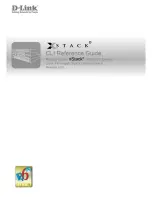
8
IBM Storage Networking SAN64B-6 Switch
A building block for virtualized, private cloud
The SAN64B-6 provides a critical building block for today’s highly virtualized and cloud
environments. It both simplifies server virtualization and meets the high-throughput demands
of solid state drives (SSDs). It also supports multitenancy in cloud environments through
virtual fabrics, quality of service (QoS), and fabric-based zoning features. In addition, it
provides efficient link utilization and security, with up to 64 Gbps of in-flight encryption and
64 Gbps of data compression over ISLs.
Organizations can have up to four ports at 16 Gbps of in-flight encryption and data
compression per SAN64B-6. Internal fault-tolerant and enterprise-class reliability, availability,
and serviceability (RAS) features help minimize downtime to support mission-critical cloud
environments.
Access Gateway mode
The SAN64B-6 can be deployed as a full-fabric switch or as an Access Gateway, which
simplifies fabric topologies and heterogeneous fabric connectivity (the default mode setting is
a switch). Access Gateway mode utilizes N_Port ID Virtualization (NPIV) switch standards to
present physical and virtual servers directly to the core of SAN fabrics.
This makes it transparent to the SAN fabric, greatly reducing management of the network
edge. The SAN64B-6 in Access Gateway mode can connect servers to NPIV-enabled b-type,
or other SAN fabrics.
Organizations can easily enable Access Gateway mode with IBM Network Advisor or a CLI.
Access Gateway mode includes the following key benefits:
Improved scalability for large or rapidly growing server and virtual server environments
Reduced management of the network edge, because Access Gateway does not have a
domain identity and appears transparent to the core fabric
Support for heterogeneous SAN configurations without reduced functionality for server
connectivity
Specifications
The SAN64B-6 has two airflow options.
Airflow options:
The SAN64B-6 offers two airflow options, either non-port side intake (NPI) or non-port side
exhaust (NPE) airflow, providing greater rack installation flexibility. The IT administrator can
use the airflow option that best suits the cooling strategy within their data center.
Note that the two power-fan assemblies must match airflow direction. All replacement
field-replaceable unit (FRU) assemblies must match the direction of the original assemblies
being replaced.






































